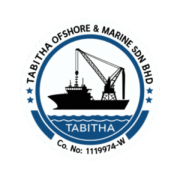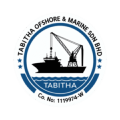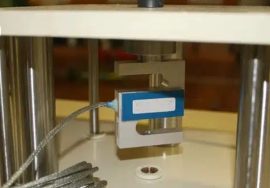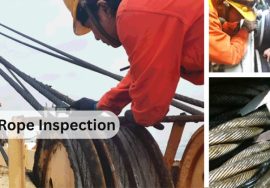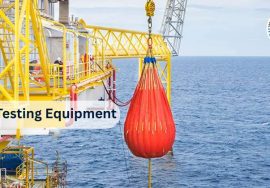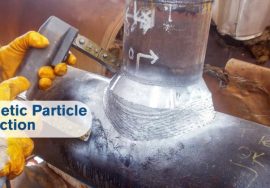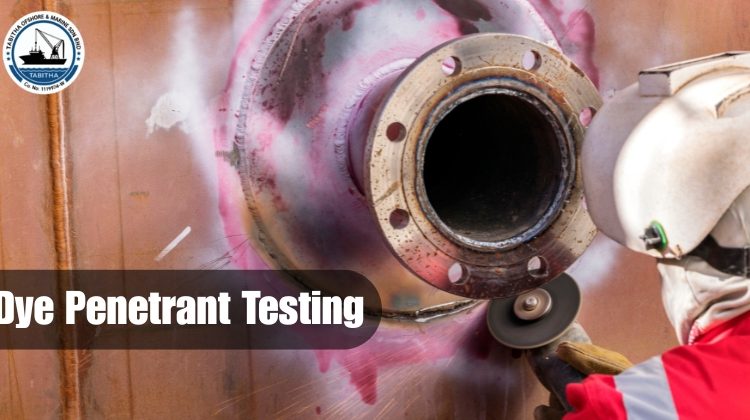
Dye Penetrant Testing: A Complete Guide for Offshore Asset Integrity
The offshore activity requires utmost safety, particularly in controlling the structure. Early flaws will allow detecting them before they cause a catastrophic failure and minimize downtime. One of the best techniques for identifying surface imperfections is dye penetrant testing (DPT). Rope access services provide the ideal combination of safety, flexibility, and affordability when accessing difficult-to-reach areas at height or within confined spaces.
What Is Dye Penetrant Testing (DPT)?
Dye penetrant testing (or liquid penetrant testing, abbreviated LPT) discloses surface-breaking discontinuities in non-porous substances. This method is based on the capillary principle-the low viscosity dye moves into tiny surface openings. After the application of some developer they look backwards in the colour and will see defects in the ultraviolet or visible light.
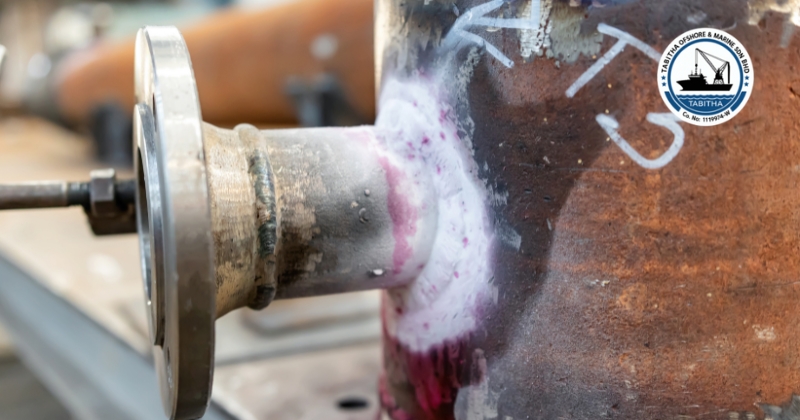
DPT is simple, fast, and dirt-cheap, which makes it the preferred choice of industries. Metals, ceramics, and certain polymers can all be effectively treated with it. But it fails to identify flaws in the ground or inside, thereby making it most appropriate when detecting cracks at the surface.
Process of Dye Penetrant testing step by step
1. Surface Cleaning
The technician will clean the test using solvents or an abrasion technique. Cleanliness will make the dye settle all the flaws.
2. Penetrant Application
The penetrant (normally red (visible), or fluorescent (UV)) is sprayed or flowed onto the surface. It enters fissures through capillary action. The dwell time depends on the material and the severity of the problem.
3. Excess Penetrant Removal
After the dwell period, the inspector removes any extra dye, leaving the penetrant in the flaws unaltered. They typically use towels free of lint and solvent.
4. Application of Developer
The flaws leave a noticeable indication after the developer extracts the trapped penetrant. It compares with the dye and acts like blotting paper.
5. Inspection
The inspector scans the surface using proper lighting. In contrast to visible dyes, which require white light, fluorescent dyes require ultraviolet light.
6. Post-Cleaning
The technician then cleans the part again after inspection in order to remove any testing materials that may still be present. On corrosion-susceptible spots, they can use rust inhibitors.
Dye Penetrant Testing Applications
Dye penetrant testing is a source of preference of offshore industries as it is efficient in detecting the critical flaws regarding the hard-to-reach environments. This is where DPT comes in handy:
- Weld Inspection: Detects surface cracks, porosity, and undercuts of offshore welded joints.
- Pressure Vessel: Detects leaks, fatigue cracks, and manufacturing defects in transport and storage containers.
- Pipelines & Risers: Detects cracks due to corrosion or mechanical damage on the subsea pipelines.
- Flanges, Valves & Couplings: identifies deterioration and damage to the sealing surface and intersections.
- Drilling Equipment: looks at derricks, hooks, and other items that are under stress, as well as saltwater.
Advantages of the Dye Penetrant Testing
- High Sensitivity: Specifically sensitive to finding thin cracks and minuscule defects that cannot be seen with the naked eye.
- Low Cost: Uses little equipment as compared to other NDTs.
- Instant Outcomes: It offers sight lines on the spot when carrying out inspections.
- Portability: May be used on-site in offshore inspection without intricate installations.
- Minimal Training: DPT is a type of training that requires less time to take its technicians through before they can handle DPT.
- Flexibility: It can be applied to a wide range of materials that include non-magnetic metals.
Why choose Tabitha Offshore to perform Dye Penetrant Testing?
Tabitha Offshore is the frontrunner in the non-destructive testing of offshore and marine industries. We have the surface advantage of dye penetrant testing:
- Professionally Certified NDT Technicians: Our personnel are both ASNT and ISO certified and work to the global standards.
- Equipment State of the art: We use tested in industry type penetrants and developers to achieve great, high contrast images, guaranteeing the best fault recall.
- On-Site and Offshore Ability: We can work offshore, in FPSOs, offshore vessels that are quite remote, and survey minimum time and selection of data inside, burdensome areas, and areas with mobile teams.
- Safety Conscious: Our HSE procedures are strict in inspection operations so that your crew members and property are safe.
- End-to-End Reporting: We have full reports of inspection, including photographs, comments, and useful hints.
- Customer-Focused: The support side of our team guarantees a smooth scheduling process, full transparency, and a follow-up after an inspection.
When you acquire Tabitha Offshore, you are not purchasing a test, but ensuring the future of your asset.
Frequently Asked Questions, Dye Penetrant Testing
Q1: Which defects can DPT test?
Ans: DPT exposes surface-breaking types of defects such as cracks, porosity, seams, laps, and grinding marks. It cannot identify defects that are subsurface or inside.
Q2: Which surfaces can I utilize dye penetrant testing on a coated or painted surface?
Ans: No. DPT calls bare and clean surfaces. Once there are paint or coatings overlying the surface, dye is not able to penetrate defects, and the results are inaccurate.
Q3: How long does it typically take to inspect?
Ans: Typically, most DPT inspections require 30 minutes to 2 hours, subject to size, density flaws, and the environment.
Q4: Can dye penetrant testing be used in offshore?
Ans: Yes. DPT functions offshore effectively when using proper safety measures and devices. We employ an eco-friendly, low-toxicity penetrant.
Q5: How will I regularly carry out DPT on offshore equipment?
Ans: Depending on the asset type, use, and environmental exposure, the frequency varies. Nonetheless, the preventive maintenance plan (6-12 months) is typical in the case of high-risk assets.
Conclusion
Dye penetrant testing is one of the simplest yet effective methods applied in identifying surface defects in offshore properties. It is quick, precise, and economical, hence a method of choice when welding, pipelines, and mechanical parts are to be checked. In the offshore industry, avoiding failure before it occurs can spell the difference between a successful operation and an expensive accident.
Technical Excellence for Our Clients. When performing an inspection, we have a team of experts ready to maintain the highest level of technical standard, and we do this with the advantage of industry experience and a client-first approach at Tabitha Offshore. Through our dye penetrant testing facilities, we will keep your offshore constructions safe, compliant, and fully operational.
